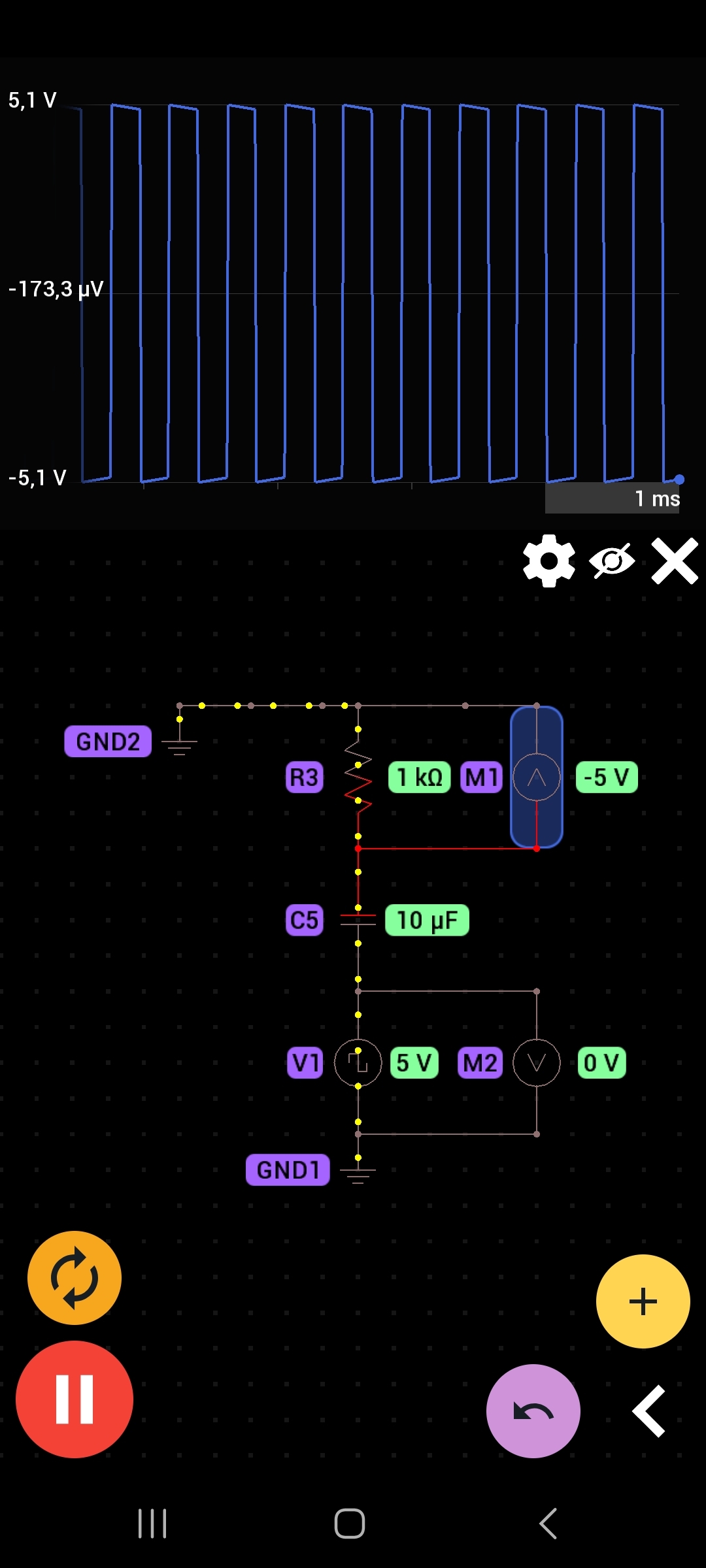this post was submitted on 07 Jul 2023
4 points (100.0% liked)
Ask Electronics
3322 readers
1 users here now
For questions about component-level electronic circuits, tools and equipment.
Rules
1: Be nice.
2: Be on-topic (eg: Electronic, not electrical).
3: No commercial stuff, buying, selling or valuations.
4: Be safe.
founded 1 year ago
MODERATORS
you are viewing a single comment's thread
view the rest of the comments
view the rest of the comments

The standard way of looking at this is to consider a capacitor-resistor series combination going to ground. Connect a 10v (wrt ground) supply to the capacitor and the voltage across the resistor rises to +10v, then decays. Now connect that capacitor to ground and that same resistor gets -10v across it, which then decays. Whatever is connected to the capacitor "top" terminal has to be able to sink current as well as source it.
That's what generators in simulators do - they have zero internal impedance (usually). They sink currents as well as source them.